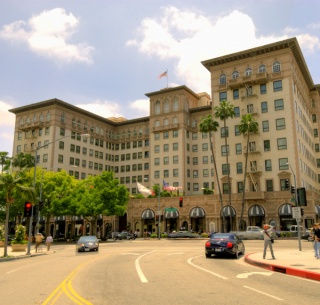Education | Timeline |
- 1829
- 1834
- 1840s
- 1848
- 1853
- 1859
- 1870
- 1870s
- 1871
- 1875
- 1877
- 1879
- 1880s
- 1882
- 1883
- 1884
- 1886
- 1887
- 1889
- 1890s
- 1891
- 1892
- 1893
- 1894
- 1895
- 1898
- 1899
- 1900
- 1900s
- 1901
- 1902
- 1904
- 1905
- 1906
- 1908
- 1909
- 1910
- 1910s
- 1911
- 1912
- 1913
- 1914
- 1915
- 1916
- 1917
- 1918
- 1919
- 1920
- 1920s
- 1921
- 1922
- 1923
- 1924
- 1925
- 1926
- 1927
- 1928
- 1929
- 1930s
- 1930
- 1931
- 1933
- 1934
- 1935
- 1936
- 1937
- 1938
- 1939
- 1940s
- 1940
- 1941
- 1942
- 1943
- 1944
- 1945
- 1946
- 1947
- 1948
- 1949
- 1950s
- 1950
- 1951
- 1952
- 1953
- 1954
- 1955
- 1956
- 1957
- 1958
- 1959
- 1960s
- 1960
- 1961
- 1962
- 1963
- 1964
- 1965
- 1966
- 1967
- 1968
- 1969
- 1970s
- 1970
- 1971
- 1972
- 1973
- 1974
- 1976
- 1979
- 1980
- 1992
USC Honors Williams
As Paul R. Williams begins to think about retiring from active practice he is honored by peers and others in the community. Tributes are announced at a testimonial dinner given for Williams. University of Southern California names a room in his honor in the soon-to-be-completed Watt Hall in the architectural complex. In addition the creation of the USC Paul Williams Scholarship in architecture is announced and Broadway Federal Savings and Loan Association donates the first check.
Colleagues Honor Paul R. Williams
Los Angeles Times, May 27, 1973
"Paul Williams, whom we honor here tonight, pioneered this profession as a minority architect and has, consequently, removed some of the barriers confronting us, thus, giving to us that incentive to press forward in a society with a slowly changing attitude, Harold Williams (no relation), president of the Association of Minority Architects and Planners of Southern California, told the audience of 450 at the Beverly Wilshire."
In the 1940s and 1950s Williams is hired for the extensive renovations at the Beverly Wilshire. The hotel is added to the National Register of Historic Places in 1987. Williams' additions/renovations were cited in the supporting document as significant examples of 1940s to 1950s period architecture.







Oil Crisis
The Organization of Arab Petroleum Exporting Countries (OAPEC) initiates an Oil Embargo against the United States in response to America's support of Israel during the 1973 Arab-Israeli War. As U.S. petroleum production falls, the country grows dependent on imported foreign oil. The crisis has decades long affects on American society:
In 1959 Paul R. Williams predicts that "people will start coming back to the city to live and will want a home designed around business and social activities." He could not foretell the energy issues of the 1970s when he made this prediction, but his understanding of consumer behavior and psychology informed his vision of the future.